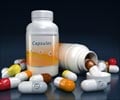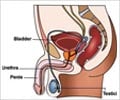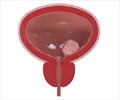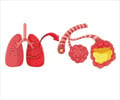Non-Communicable Diseases(NCDs) are a group of chronic conditions that are not passed from person to person. It includes hypertension, diabetes, stroke, chronic respiratory diseases, and cancer (1✔ ✔Trusted Source
About Global NCDs
Go to source).
Advertisement
Fifteen Health Facts on Non-Communicable Diseases:
- Non-Communicable Diseases lead to more deaths globally than communicable diseases. Among communicable diseases,
malaria , tuberculosis, and HIV/AIDS form the main causes of death, but their numbers are falling (2✔ ✔Trusted Source
The top 10 causes of death
Go to source). - Non-Communicable Diseases are responsible for about 41 million deaths per year, which account for 74% of the total global deaths (3✔ ✔Trusted Source
Noncommunicable diseases
Go to source). - Non-Communicable Diseases account for 80% of the burden in developed countries and 70% in middle-income countries (4✔ ✔Trusted Source
The burden of non communicable diseases in developing countries
Go to source). - Unlike the majority of communicable diseases, no single cause or agent can be held responsible for the emergence of non-communicable diseases.
- Although these
chronic diseases are responsible for most of the deaths and disease burdens in older age (more than 70 years), a significant number of deaths have also been seen in the age group of 30 to 69 years. These premature NCD deaths account for about 15 million deaths annually (5✔ ✔Trusted Source
Projection of premature mortality from noncommunicable diseases for 2025: a model based study from Hunan Province, China, 1990-2016
Go to source).
Advertisement
- Non-Communicable Diseases cause a premature death every two seconds. Low- and middle-income nations account for 85% of premature deaths (1✔ ✔Trusted Source
About Global NCDs
Go to source). - Most of the NCD deaths are due to cardiovascular diseases, such as heart attacks (ischemic heart disease), hypertension (increased blood pressure), rheumatic heart disease, stroke (cerebrovascular disease). These chronic cardiovascular conditions account for 17.9 million deaths annually (3✔ ✔Trusted Source
Noncommunicable diseases
Go to source). - 9.3 million people die from cancer every year. Respiratory diseases and diabetes are responsible for 4.1 million and 1.5 million deaths per year, respectively (6✔ ✔Trusted Source
Noncommunicable diseases: Mortality
Go to source). - Sedentary lifestyle (inadequate physical activity), stress, tobacco smoking, harmful alcohol intake, high blood sugar, high salt diet, obesity, high cholesterol, and high triglyceride levels are a few of the major risk factors leading to non-communicable diseases. Rapid urbanization has significantly contributed to the rising trends of the risk factors mentioned (7✔ ✔Trusted Source
Non Communicable Disease Risk Factors and their Trends in India
Go to source). - Lifestyle modification is the mainstay of prevention and control of non-communicable diseases. Practice of a healthy lifestyle is advocated; regular exercise, cessation of smoking, avoidance of harmful levels of alcohol intake, consumption of a low-salt and low-fat diet, increased intake of dietary fibers are few of the measures that can improve outcomes (8✔ ✔Trusted Source
Management and Prevention Strategies for Non-communicable Diseases (NCDs) and Their Risk Factors
Go to source).
Advertisement
- Tobacco use is a major risk factor for the majority of the NCD diseases. Tobacco use is responsible for around 8 million deaths per year. This includes people who smoke firsthand, as well as non-smokers, who are exposed to tobacco smoke passively (9✔ ✔Trusted Source
Tobacco
Go to source). - Smoking cessation significantly reduces the risk of death from coronary heart disease. The risk declines substantially within 1 year of cessation. Moreover, after 20 to 30 years of tobacco-free periods, the individual's risk of developing tobacco-related coronary heart disease is the same as that of a nonsmoker. The risk of fatal heart attack episodes also decreases by almost 50% (10✔ ✔Trusted Source
Smoking status and survival: impact on mortality of continuing to smoke one year after the angiographic diagnosis of coronary artery disease, a prospective cohort study
Go to source). - Cutting down the quantity of high glycemic index food items from the diet is another notable approach. The glycemic index is a grading system based on how quickly a food item affects the blood glucose levels. Foods with a high glycemic index are broken down rapidly by our body, leading to a sharp rise in blood glucose levels. On the contrary, low glycemic index foods are broken down slowly. They are readily digestible and lower the absorption of sugar (11✔ ✔Trusted Source
The prevention and control the type-2 diabetes by changing lifestyle and dietary pattern
Go to source). - Studies suggest that a minimum duration of 150 minutes of heart pumping aerobic exercises per week in the adult population can be beneficial in improving cardiac outcomes. It can be divided into 30 minutes of brisk walking, cycling, swimming, running, etc. for at least 5 days a week (12✔ ✔Trusted Source
Cardiovascular Effects and Benefits of Exercise
Go to source). - Poverty is strongly linked to NCDs. In low- and middle-income countries, poverty increases the risk of death and disability from non-communicable diseases such as cancer, heart disease, stroke, and diabetes (3✔ ✔Trusted Source
Noncommunicable diseases
Go to source).























